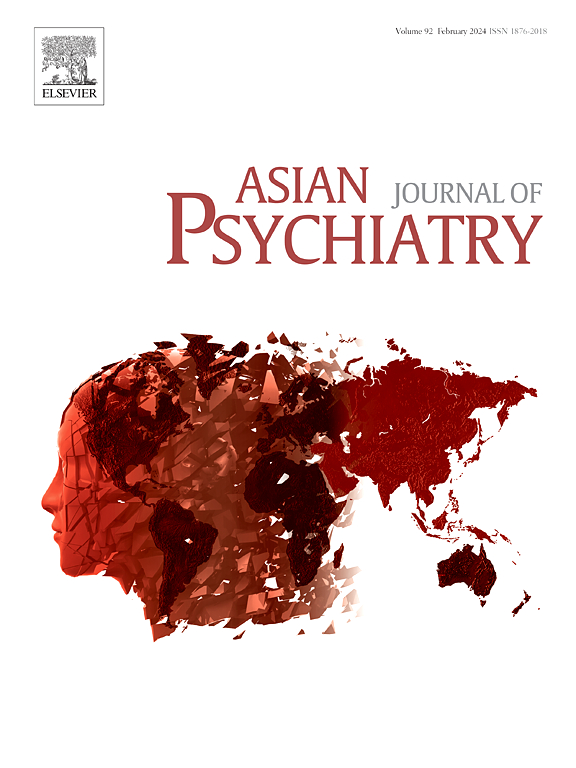Understanding of premenstrual dysphoric disorder and premenstrual syndrome among professionals in Japanese university health services: A survey with simulated cases
IF 3.8
4区 医学
Q1 PSYCHIATRY
引用次数: 0
Abstract
Objectives
Premenstrual dysphoric disorder (PMDD) and severe premenstrual syndrome (PMS) exert profoundly adverse effects on quality of life. We surveyed psychiatrists and clinical psychologists in Japan to determine their understanding and practice of diagnosing PMDD/PMS.
Methods
We targeted psychiatrists and clinical psychologists working at health administration facilities of universities in Japan who treat female patients with depressive symptoms in their late teens and 20 s—when PMDD/PMS is likely to develop. We presented a fictitious clinical case of a 23-year-old female and investigated whether the participants considered PMDD/PMS as a potential diagnosis. We also investigated the practitioners’ basic understanding of PMDD/PMS.
Results
We analyzed survey responses from 26 psychiatrists and 140 clinical psychologists. Comparatively few respondents considered PMDD/PMS a possible diagnosis or routinely inquired about a patient’s menstruation. When practitioners were provided with information linking observed symptoms to the menstrual cycle, most considered PMDD and PMS possible diagnoses. Recognizing and considering PMDD/PMS was related to the respondents’ attributes.
Conclusions
Clinicians should consider PMDD/PMS when treating women with depressive symptoms.
日本大学医疗服务机构专业人员对经前焦虑症和经前综合征的了解:模拟病例调查
目的月经紊乱症(PMDD)和严重的经前期综合征(PMS)对生活质量产生了严重的负面影响。我们对日本的精神科医生和临床心理学家进行了调查,以了解他们对 PMDD/PMS 诊断的理解和实践情况。方法 我们的调查对象是在日本大学健康管理机构工作的精神科医生和临床心理学家,他们负责治疗 10 多岁和 20 多岁有抑郁症状的女性患者--PMDD/PMS 很可能在这个年龄段出现。我们虚构了一个 23 岁女性的临床病例,并调查了参与者是否认为 PMDD/PMS 是一种潜在的诊断。我们还调查了从业人员对 PMDD/PMS 的基本理解。结果我们分析了来自 26 名精神科医生和 140 名临床心理学家的调查反馈。相对而言,很少有受访者认为 PMDD/PMS 是一种可能的诊断,也很少有受访者例行询问患者的月经情况。当从业人员获得观察到的症状与月经周期相关联的信息时,大多数人认为 PMDD 和 PMS 可能是诊断结果。结论临床医生在治疗有抑郁症状的女性时,应考虑 PMDD/PMS。
本文章由计算机程序翻译,如有差异,请以英文原文为准。
求助全文
约1分钟内获得全文
求助全文
来源期刊

Asian journal of psychiatry
Medicine-Psychiatry and Mental Health
CiteScore
12.70
自引率
5.30%
发文量
297
审稿时长
35 days
期刊介绍:
The Asian Journal of Psychiatry serves as a comprehensive resource for psychiatrists, mental health clinicians, neurologists, physicians, mental health students, and policymakers. Its goal is to facilitate the exchange of research findings and clinical practices between Asia and the global community. The journal focuses on psychiatric research relevant to Asia, covering preclinical, clinical, service system, and policy development topics. It also highlights the socio-cultural diversity of the region in relation to mental health.
 求助内容:
求助内容: 应助结果提醒方式:
应助结果提醒方式:


